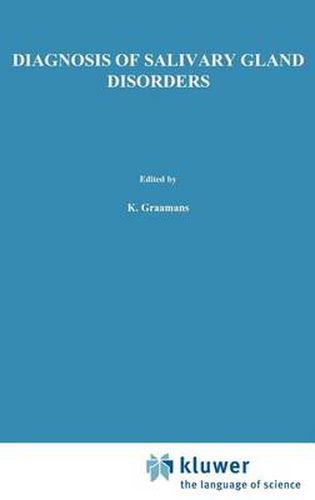Readings Newsletter
Become a Readings Member to make your shopping experience even easier.
Sign in or sign up for free!
You’re not far away from qualifying for FREE standard shipping within Australia
You’ve qualified for FREE standard shipping within Australia
The cart is loading…






This title is printed to order. This book may have been self-published. If so, we cannot guarantee the quality of the content. In the main most books will have gone through the editing process however some may not. We therefore suggest that you be aware of this before ordering this book. If in doubt check either the author or publisher’s details as we are unable to accept any returns unless they are faulty. Please contact us if you have any questions.
Historically, disorders of salivary glands tend to be ‘underdiagnosed and overtreated’. In the vast body of literature on this subject, emphasis has usually been put on therapeutic modalities of various diseases of the salivary glands. Whereas therapy and pathology have been treated in numerous thorough studies, the (patho )physiology of the salivary glands has remained rather poorly understood. Even less attention has been given to the diagnostic methods. Until a few decades ago, diagnosis consisted mainly of a clinical examin ation which included the patient’s history, inspection, and palpation. These methods remain crucial, but a variety of new diagnostic tools have appeared since then. Their clinical value is still subject to controversy; each method has its advocates and opponents. The indications for enrolling a patient at a given point in a series of diagnostic procedures are interpreted differently. One of the most striking examples is the use of sialography. This has become a classic diagnostic procedure. Although sialography is still a useful method, it has considerable disadvantages, limitations, and even contraindications. In the major teaching hospitals, residents still tend to consider sialography as a panacea for the majority of their diagnostic problems, whereas the infor mation provided is actually rather restricted. Other modern methods such as CT and MRI have taken over the role of sialography to a certain extent. This also applies to ultrasonography and scintigraphy. Moreover, microbiol ogy, sialometry, sialochemistry, cytology, and histopathology may give super ior information in certain cases.
$9.00 standard shipping within Australia
FREE standard shipping within Australia for orders over $100.00
Express & International shipping calculated at checkout
This title is printed to order. This book may have been self-published. If so, we cannot guarantee the quality of the content. In the main most books will have gone through the editing process however some may not. We therefore suggest that you be aware of this before ordering this book. If in doubt check either the author or publisher’s details as we are unable to accept any returns unless they are faulty. Please contact us if you have any questions.
Historically, disorders of salivary glands tend to be ‘underdiagnosed and overtreated’. In the vast body of literature on this subject, emphasis has usually been put on therapeutic modalities of various diseases of the salivary glands. Whereas therapy and pathology have been treated in numerous thorough studies, the (patho )physiology of the salivary glands has remained rather poorly understood. Even less attention has been given to the diagnostic methods. Until a few decades ago, diagnosis consisted mainly of a clinical examin ation which included the patient’s history, inspection, and palpation. These methods remain crucial, but a variety of new diagnostic tools have appeared since then. Their clinical value is still subject to controversy; each method has its advocates and opponents. The indications for enrolling a patient at a given point in a series of diagnostic procedures are interpreted differently. One of the most striking examples is the use of sialography. This has become a classic diagnostic procedure. Although sialography is still a useful method, it has considerable disadvantages, limitations, and even contraindications. In the major teaching hospitals, residents still tend to consider sialography as a panacea for the majority of their diagnostic problems, whereas the infor mation provided is actually rather restricted. Other modern methods such as CT and MRI have taken over the role of sialography to a certain extent. This also applies to ultrasonography and scintigraphy. Moreover, microbiol ogy, sialometry, sialochemistry, cytology, and histopathology may give super ior information in certain cases.